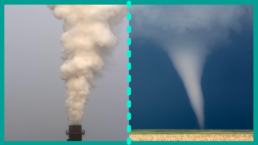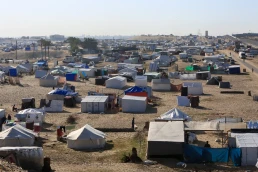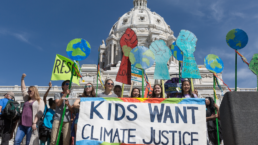The latest IPCC science report affirmed an increase in U.S. tornado clusters.
By Bob Berwyn, Inside Climate News
Adding a grim exclamation point to a year of deadly climate extremes, the early December tornadoes that killed at least 90 people in the Southeast were some of the most intense storms on record so late in the year.
The storms fired up in Arkansas the night of Dec. 10, during weather far too hot and humid for the season, and raced across Missouri, Illinois, Tennessee and Kentucky on Dec. 11. It will take weeks of analyzing data to make final classifications of the tornado outbreak’s intensity. But some of the mega-twisters that destroyed lives, livelihoods and communities may have raked the ground for 250 miles and thrown debris 30,000 feet high into the atmosphere.

So far in 2021, nine severe storm episodes (not just tornadoes) have caused $15 billion in damage and accounted for half of the climate-related events on the federal billion-dollar disaster list. The increasing trend of damages from severe storms has also been tracked by the insurance industry, which shows losses steadily increasing for 40 years.
In 2017, a research meteorologist with Munich Re, a global reinsurance company, wrote in a newsletter that “an increase of atmospheric heat and moisture due to our warming climate will likely increase the number of days per year that are favorable for thunderstorms and their associated hazards, including tornadoes.”
It’s not yet clear if and how global warming fuels individual tornadoes, because they are so small they can’t be reproduced by climate models. But after a Northern Hemisphere summer of floods, droughts, smoky wildfires and heat waves, climate scientists and meteorologists on social media and in broadcast interviews placed the December tornadoes squarely in the context of global warming.
Recent Posts
Why Are Democratic Lawmakers Still Meeting With Netanyahu?
July 12, 2025
Take Action Now Pictures show Democrats like Chuck Schumer standing next to Netanyahu, smiling.By Sharon Zhang, Truthout A bipartisan group of…
Stop Israel’s Dystopian “Humanitarian City” Plan—Before It’s Too Late
July 11, 2025
Take Action Now For the past 20 months, the world has watched—and largely enabled—a genocidal campaign in Gaza. Over 55,000 Palestinians have been…
The “Liberal” International Order Is Criminalizing Palestine Protests
July 11, 2025
Take Action Now As Western governments repress Palestine solidarity and enable Israel’s impunity, the “liberal international order” is no longer…
Politicians Are Betraying Gen Z On Climate
July 10, 2025
Take Action Now While Gen-Zers thrift, knit, crochet, and find other ways to reduce our footprints, Trump and the GOP are greenlighting more climate…




